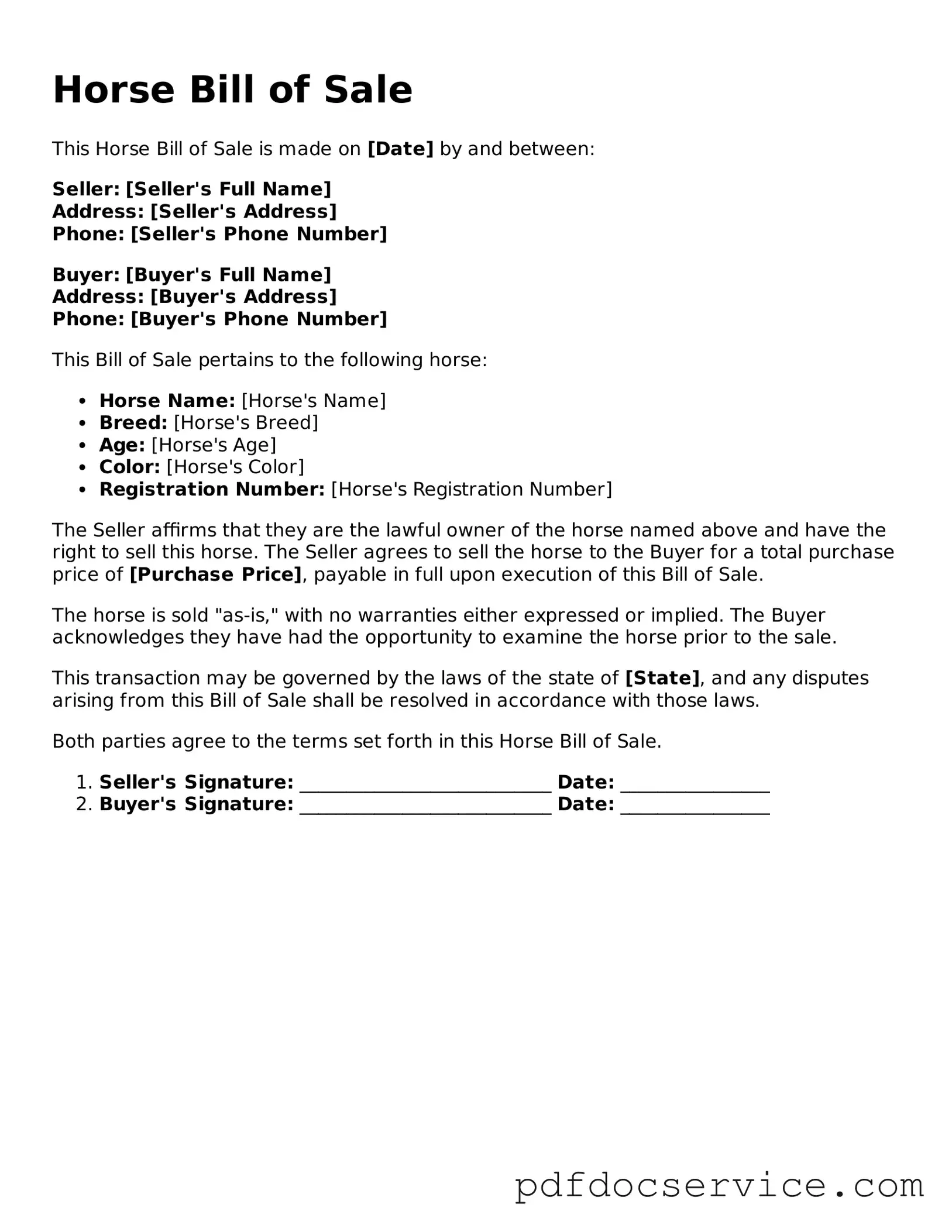Blank Horse Bill of Sale Form
The Horse Bill of Sale form is a legal document used to transfer ownership of a horse from one party to another. This form outlines essential details such as the horse's description, sale price, and the terms of the sale. Utilizing this document protects both the buyer and seller by ensuring a clear record of the transaction.
Open Horse Bill of Sale Editor
